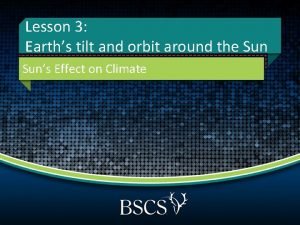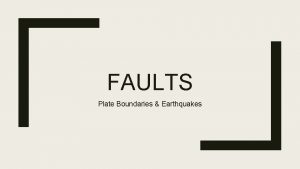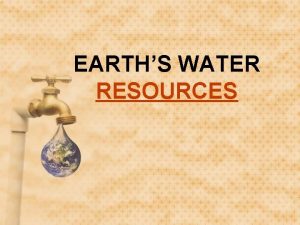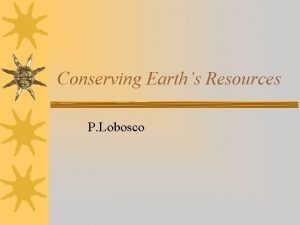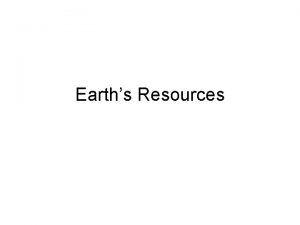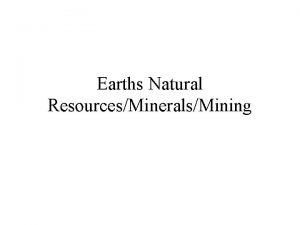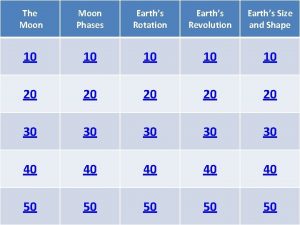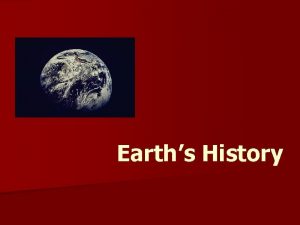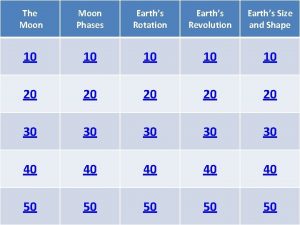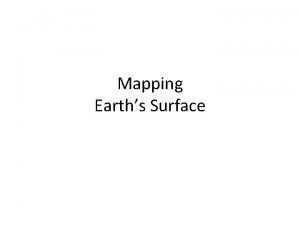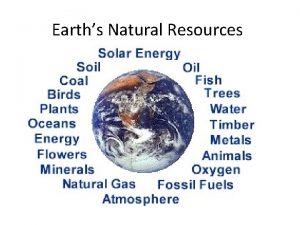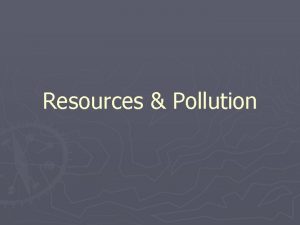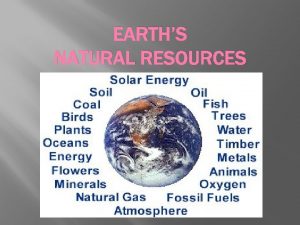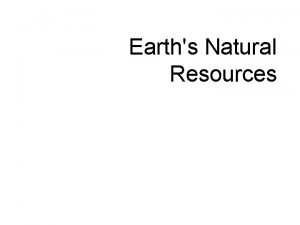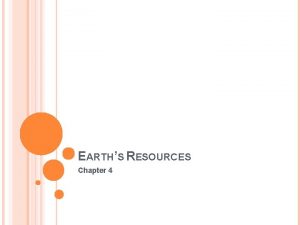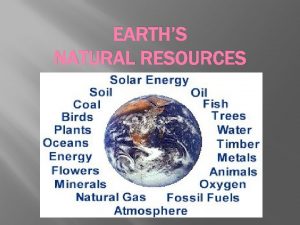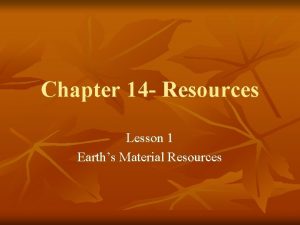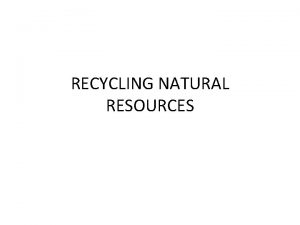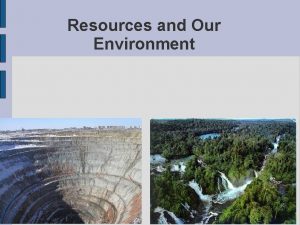Earths Resources What are Earths resources Earths resources





















- Slides: 21

Earth’s Resources

What are Earth’s resources? Earth’s resources include any substance which can be used by humans or other animals. There are two types of resources: Renewable Resources Nonrenewable Resources

Renewable and Nonrenewable Take the next two to three minutes and write down what you believe the differences between renewable resources and nonrenewable resources are. Include at least two examples of each.

Renewable Resources Renewable resources are those resources which can be replaced in days, weeks, months, years or even a few decades. What are examples of this type of resource?

Renewable Resources Renewable resources include: Solar Energy Nuclear Energy Wind Energy Geothermal Energy Water Land Resources Air

Solar Energy Solar energy is the power we harvest from the sun. You can capture solar energy through: Solar Panels Windows Solar energy is also required to grow plants.

Nuclear Energy Nuclear energy is generated through the splitting of uranium atoms. This type of energy is very cost efficient; however, it is extremely dangerous.

Wind Energy We can capture energy from the wind using large turbines. For this type of energy to be efficient, strong, steady wind is needed.

Geothermal Energy Geothermal energy can be captured near regions of high volcanic activity. The steam from underground water reservoirs is used to turn large turbines which produces electricity.

Water covers approximately 71% of the Earth’s surface. However, less than 1% of Earth’s water resources is usable fresh water.

Land Resources Land resources include land itself and the vegetation which grows on land.

Air Although you may not think of air as a resource at first, it is one of the most important. Air pollution continues to become a larger problem as Americans use more and more fossil fuels.

Nonrenewable Resources Nonrenewable resources are those resources which take millions of years to form. Can you list a few examples of nonrenewable resources?

Nonrenewable Resources Nonrenewable resources include: Coal Petroleum Natural Gas Tar Sands Mineral Deposits

Coal takes millions of years to form. It is made by pressurized and heated plant materials. Coal is used to generate electricity.

Petroleum is formed by the remains of plants and animals on the ocean floor. It takes millions of years for petroleum to develop. Petroleum is used as fuels and to create plastics, asphalt, waxes and lubricants.

Natural Gas Natural gas forms with petroleum; however, the gas is less dense and rises above the petroleum. Natural gas is used to generate power, to produce fertilizers and to harvest hydrogen gas.

Tar Sands Tar sands are a mixture of clay, sand tar. The oil in tar sands is similar to crude oil. Tar sands can be refined to produce petroleum products.

Mineral Deposits Mineral deposits include substances such as gold, silver, copper, and lead as well as nonmetallic minerals such as calcite, clay minerals, quartz and sulfur.

Protecting Earth’s Resources You can help protect Earth’s resources by: Keeping water clean and safe. Protecting the air. Caring for land resources. Recycling.

Resources Tarbuck, E. , & Lutgens, F. (2006). Prentice Hall Earth Science Teacher's Edition. Upper Saddle River, New Jersey: Pearson Education, Inc. .
 Mikael ferm
Mikael ferm Earths orbit seasons
Earths orbit seasons What does earths tilt do
What does earths tilt do Chalogen elements
Chalogen elements Continental drift theory
Continental drift theory Earths early atmosphere contained
Earths early atmosphere contained Earths roation
Earths roation We live in this layer of the atmosphere.
We live in this layer of the atmosphere. Brown earth soil ireland
Brown earth soil ireland Earths boundaries
Earths boundaries How thick is the earths crust
How thick is the earths crust Earths crust
Earths crust The earth's layers foldable
The earth's layers foldable Whats earths moon called
Whats earths moon called Describe the true shape of earth's orbit
Describe the true shape of earth's orbit Earth's honey
Earth's honey Earths physical features
Earths physical features 4 spheres of the earth
4 spheres of the earth Whats earths moon called
Whats earths moon called Where
Where Earths major crustal plates
Earths major crustal plates Home sweet biome crossword
Home sweet biome crossword


